Church of the Annunciation, Nazareth – Visitors Guide
According to Catholic tradition, the Church of the Annunciation is where the house of the Virgin Mary once stood and where the angel Gabriel appeared to her and announced that she would conceive and bear the Son of God, Jesus.
Table of Contents
Map
Church of the Annunciation is situated on Al-Bishara Street 12, Nazareth.
Directions for drivers: Link to Waze and Link to Google Maps
Directions for public transport: Link to Moovit
Interactive map of the area:
Directions
If you are using public transport, you can use the train and a variety of buses. Here is already a preset link to Moovit. Just enter your starting point, and you will get the updated directions.
And if you are driving, then you will need to find parking. But I have to warn you. Traffic in Nazareth is heavy and inconvenient. So even if you have a car, consider public transport.
Parking
There are several paid parking lots in the center of Nazareth. During my latest visit, I parked at Iksal Street 9. But there are other places as well.
Opening Hours
According to Christian Information Center, the opening hours are:
Grotto: 5:45 – 21:00
Upper Basilica: 8:00 – 18:00
St Joseph’s Church: 7:00 – 18:00
But several websites mention different opening hours. Usually, 08:00 – 17:00, and the church is closed on Sunday. Thus, if you are going to visit on Sunday, I would suggest verifying the opening hours. You can find their contact information here.
Entrance Fee
Free.
Dress Code
The dress code of this place is similar to all other religious places. I call it knees and shoulders. That means the clothes must reach the knees (preferably below them) and cover the shoulders.
Basilica of the Annunciation
We will start by visiting the Church of the Annunciation, sometimes called the Basilica of the Annunciation. And then stop at St. Joseph’s Church, which is located in the same compound.
History
“The angel went to her and said: Greetings, you who are highly favored! The Lord is with you”. (Luke 1:28)
Despite the importance of Nazareth in the lives of Jesus and his parents, it did not immediately become a place of Christian pilgrimage. The first shrine was probably built sometime in the middle of the 4th century.
The Spanish pilgrim, the Lady Egeria, who visited Nazareth in 383, was shown a “big and very splendid cave in which Mary lived. An altar has been placed there.” This was probably the larger of the caves enshrined in the grotto of the present Basilica of the Annunciation. By Roman Catholic tradition, it is the place where the angel Gabriel appeared to Mary.
By 570, a church had been built on the site. A 4th- or 5th-century Greek mosaic inscription was found, with the dedication: “For Conon, Deacon of Jerusalem”.
Pilgrims to Nazareth in the Byzantine period were also shown a cave with a spring from which Mary drew water (possibly the spring beneath the present Greek Orthodox Church of the Archangel Gabriel), and the “synagogue” where Jesus read from Isaiah. Various accounts mention church buildings at all three sites. These early churches apparently survived the Arab conquest because the pilgrim Arculf, a bishop from Gaul visiting in 670, saw two “huge churches” in the town. But by the time of the Crusader conquest in 1099, all the Christian holy places in Nazareth were in ruins.
The Norman knight Tancred, Prince of Galilee, immediately ordered the construction of a new cathedral above the cave in the center of the town. It was the largest of the Crusader-built churches, and the Anglo-Saxon pilgrim Saewulf, visiting in 1102, described it as “a very noble monastery” (he also reported that the town had been entirely laid waste by the Saracens). This Crusader cathedral was apparently damaged by the earthquake in 1170. Repairs began but were not complete when the Crusaders suffered defeat at the Battle of Hattin and were expelled from the town.
A series of subsequent treaties allowed continued Christian pilgrimage to the Grotto of the Annunciation during the next hundred years, even after 1263, when the town was sacked and the churches destroyed by order of the Mamluk sultan Baybars. The possibility of pilgrimage came to an end in 1291 with the fall of Acre and the final expulsion of the Crusaders from the remaining Frankish settlements and fortresses along the coast.
A Roman Catholic clerical presence in Nazareth was not re-established until 1620 when the Druze emir Fakhr-a-Din permitted the Franciscan fathers to purchase the ruins of the Crusader cathedral and grotto. In 1730, the Franciscans obtained a firman (decree) from the Ottoman sultan, allowing them to build a new church on the site. This structure was enlarged in 1877 and then completely demolished in 1955 to allow a new basilica construction. Before starting the actual building, a thorough archeological investigation of the site was carried out by the Studium Biblicum Franciscanum (Jerusalem).
Designed by the architect Giovanni Muzio, the present Basilica of the Annunciation is built on two levels. The upper level follows the outline of the 12th-century Crusader- cathedral (a nave, flanked by two aisles) and partly reconstructs the eastern apses. The lower level enshrines the Byzantine grotto.
The new basilica, the largest Christian sanctuary in the Middle East, was dedicated in 1964 by Pope Paul VI during his historic visit to the Holy Land and consecrated on 23 March 1969. A second, ecumenical service two days later included the participation of prelates and clergy from the Greek Orthodox, Armenian, Coptic, Ethiopian, Syrian and Lutheran churches.
Source: Ministry of Foreign Affairs

As you enter through the entry in the photo above, you will reach the Grotto of the Annunciation.
Grotto of the Annunciation
As mentioned towards the end of the History section, the Church of the Annunciation has two levels. The lower level contains the Grotto of the Annunciation. Many believe that these are the remains of Mary’s house.

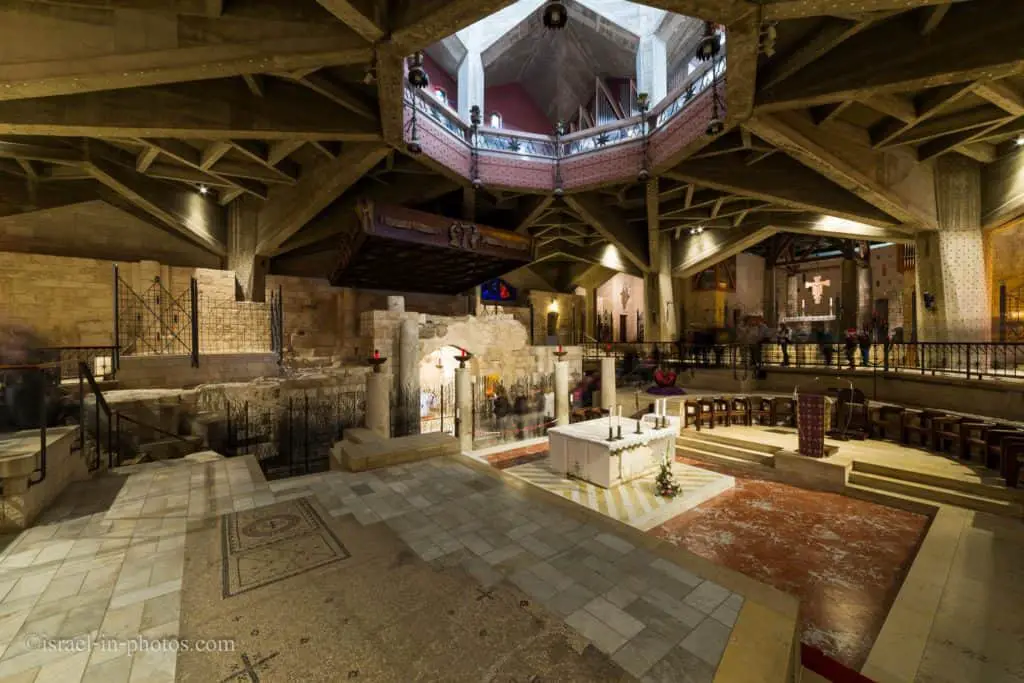
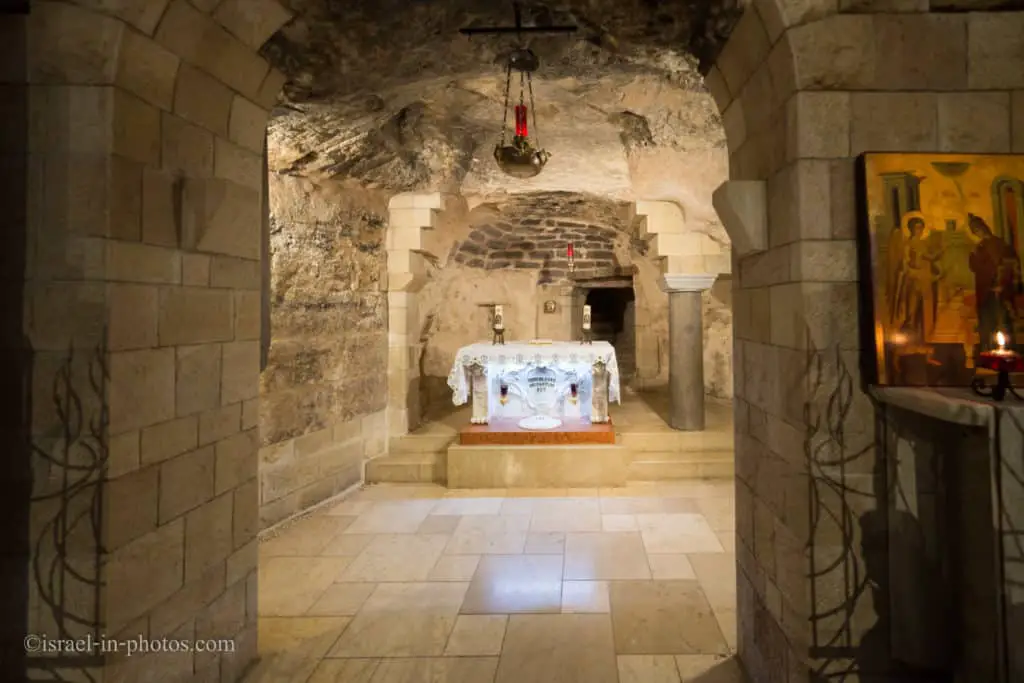
The Upper Church
You can return to the entrance from the Grotto and take the spiral stairs to the upper level.

The upper level contains a number of images of Mary, mainly mosaics, each from a different country with a significant Catholic population.
Source: Wikipedia

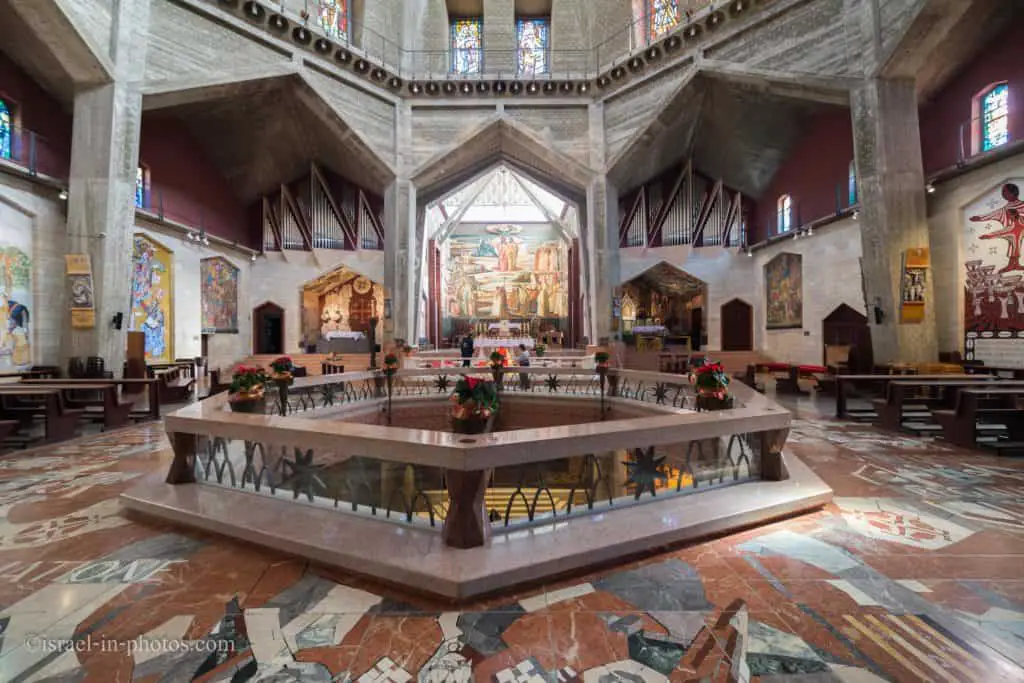
The Dome
The basilica dome is made of reinforced concrete, and its parts were brought to the site when they were ready. Since the church is located in the center of Nazareth, an area located in the valley, Muzio has created a large dome, almost disproportionate to the structure on which it stands to emphasize its presence in the urban landscape. To raise the dome even higher, Muzio built it in the shape of a steep cone, and at the top, he fixed a large lamp made of stone and resembling a lighthouse – a symbol of the divine light radiating from the gospel.
The dome has 16 edges, resembling a white lily, a symbol of Miriam’s virginity. It rests on a stylish loggia made of stone, which also has 16 edges, and on each side three openings. The loggia is fixed in the Torah on a large octagonal structure made of concrete and covered with stone. There are 16 windows fixed in the octagon, two on each side – in 12 of them, the apostles are seen. In one, Miriam’s parents are seen and Miriam in her infancy. The remaining two windows are dedicated to the Syrian Ephraim and Bernard of Clarebo, representing the Eastern and Western ecclesiastical teaching. The total height of the basilica from the ground to the end of the lamp is 66 meters.
On its inner side, the dome stands above the octagonal opening that connects the church’s two levels and is therefore visible from both. Though the outer shell consists of 16 edges, on its inner side 32 edges, resembling a huge flower covering the holy place. The octagonal structure on which the dome rests and its 16 windows are also clearly visible from inside the church space.
Source: Wikipedia
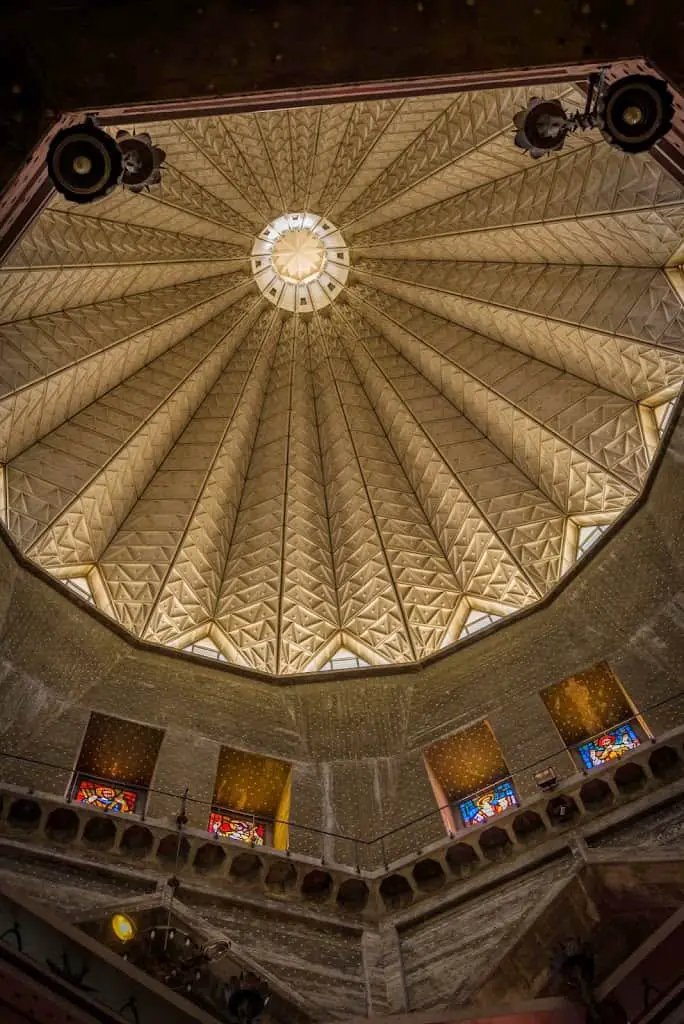
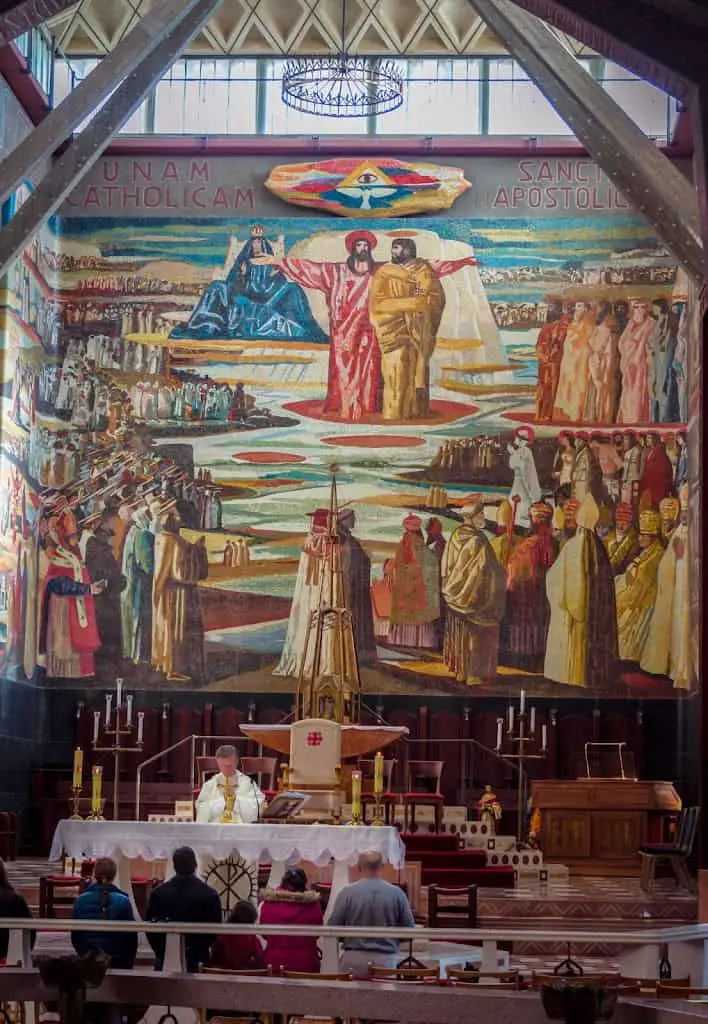

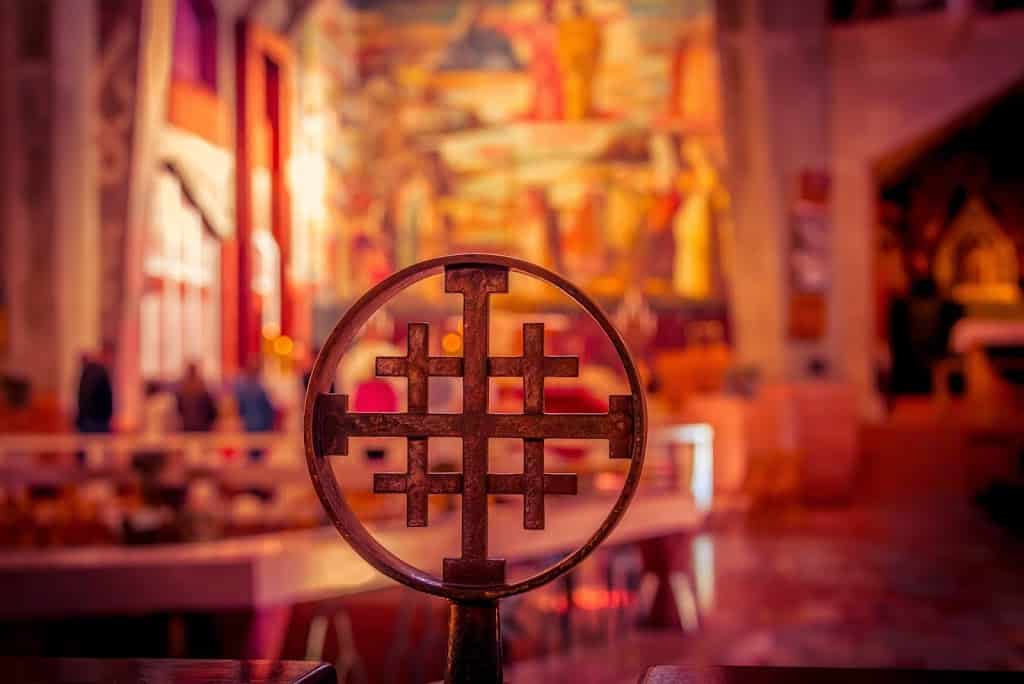
The Courtyard
If you take the side exit from the upper church, you will reach the area shown in the following photo. This is the northern area.
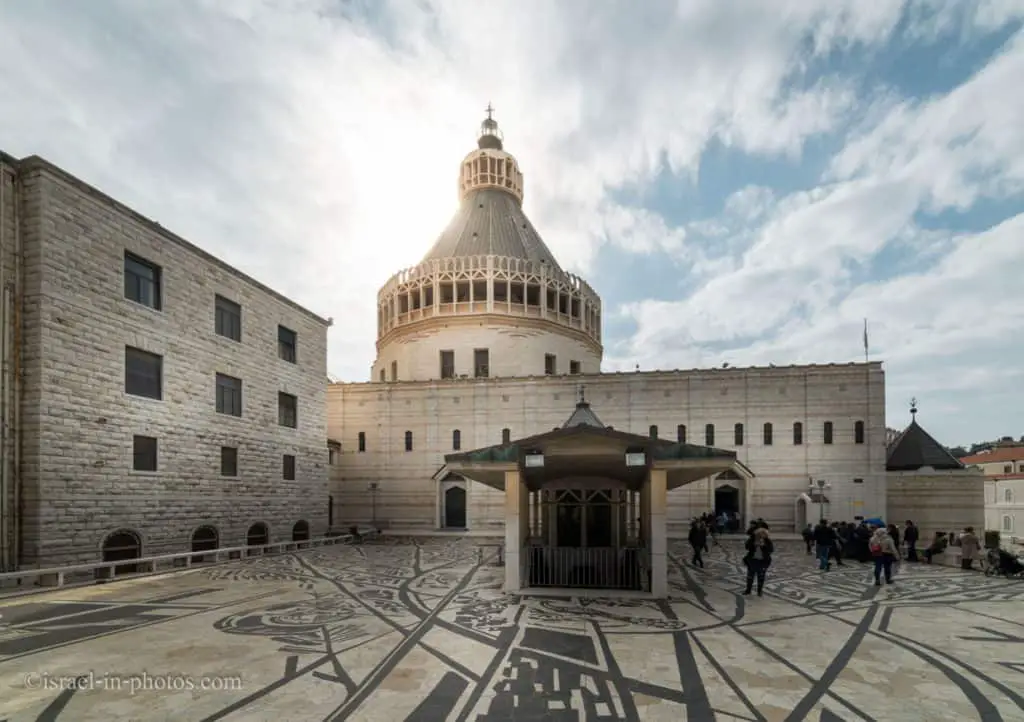
The northern area and the Baptistery, which is located on it, all stand on pillars. Beneath it, you can find archeological remains, including a living cave from the 8th century BCE. You can see the remains either from the Baptistery or from the stairs (on the right of the photo above) that lead to the entrance.
Also, while in the courtyard, take a look at the walls.

The courtyard and the upper church are decorated with mosaics donated by Catholic communities worldwide.
It is only 50 meters from the northern area to St. Joseph’s Church, so let’s visit it.
St. Joseph’s Church
The church of St. Joseph was built in 1914 on the site of an earlier 12th-century church.

The early dweller of Nazareth used the caves, granaries, and wells on the lower level. Later, Christians turned the site into a worship place.
During the 7th century, travelers pointed out that this was the carpentry workshop of Joseph, father of Jesus. And according to more recent tradition, this place is identified as “The House of Joseph.”
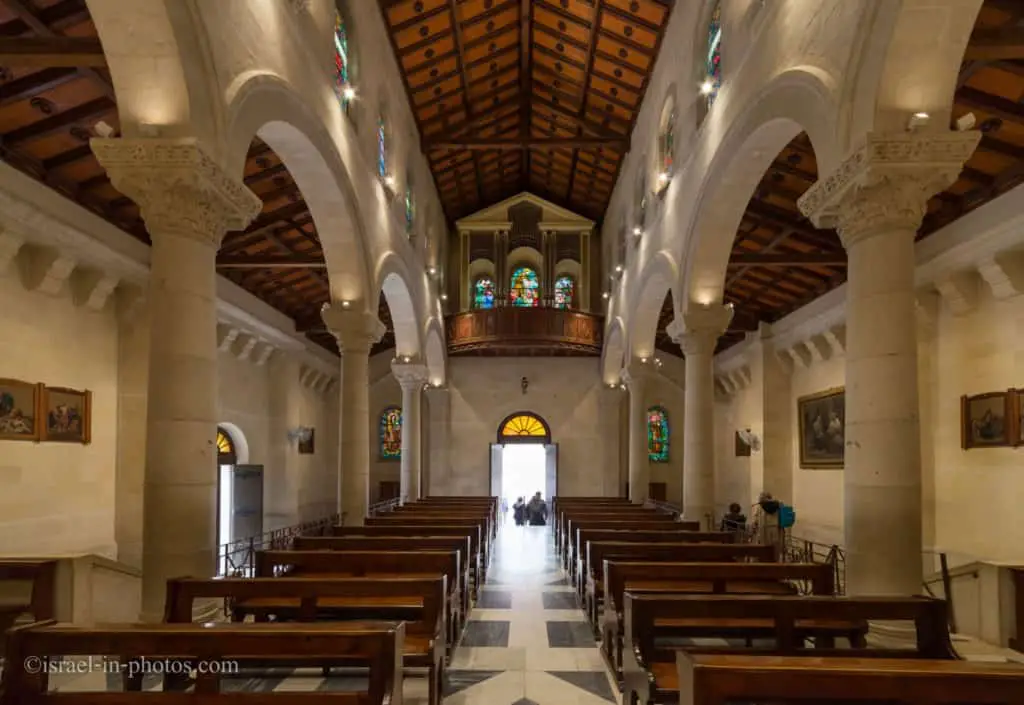
The church is built in a New Romantic style, based on the foundations of the ancient Crusader church. It has 3 long halls ending with 3 enceintes on the east, built over Crusaders’ remains. The stairs are leading to the lower floor, where there is a crypt holding archeological remains from the Nazareth village times as well as the cave used as Joseph’s workshop.
In 1950 the apses were decorated by an Italian artist. The main picture shows the holy family and an additional one is of Joseph only. Around the podium, there’s an additional picture of the holy family. The windows decorations tell the story of the place as well.
Source: nazarethinfo.org

Summary
Church of the Annunciation is probably the most popular tourist attraction in Nazareth. And if you are visiting the city, I recommend stopping there.
Note: if you are looking for additional nearby attractions, browse the map at the top of this post or see Nazareth.
Have you ever been to the Church of the Annunciation? Tell us in the comments below.
That’s all for today, and I’ll see you in future travels!
Stay Tuned!
Additional Resources
Here are several resources that I created to help travelers:- Trip Planner with Attractions and Itineraries is the page that will help you create your perfect travel route.
- What is the Best Time to visit Israel? To answer this question, we will consider the weather, prices, holidays, festivals, and more.
- Information and Tips for Tourists to Israel will answer the most common questions tourists have about Israel (including safety, passports, weather, currency, tipping, electricity, and much more).
- Israel National Parks and Nature Reserves include a complete list, top ten, map, tickets (Israel Pass, Matmon, combo), and campsites.
- If you are looking for things to do, here are the pages for Jerusalem, Tel Aviv, Haifa, Sea Of Galilee, Akko (Acre), Eilat, Nazareth, Safed (Tzfat), and Makhtesh Ramon.



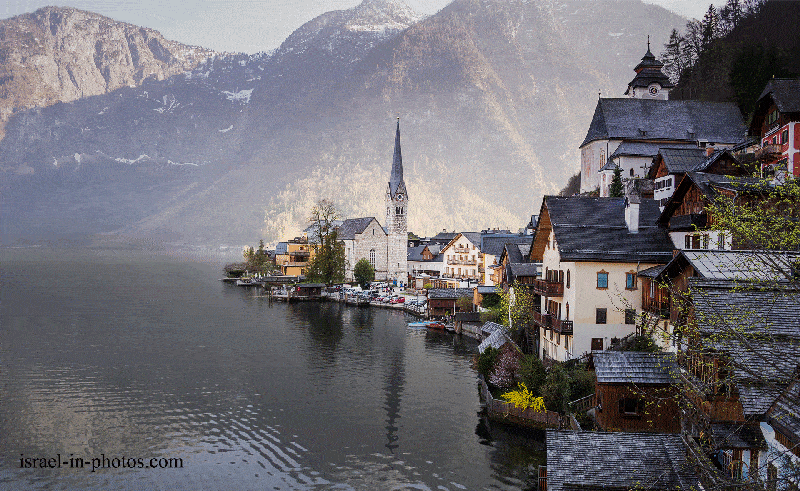




When my husband and I were there we ate at AlReda Restaurant and it was wonderful!
Thanks for the info.
I shared this on the “Jews For Israel” page on Facebook that I Moderate: https://www.facebook.com/groups/41907577341
can someone explain the mosaic behind the altar?
Hi,
The most info about this mosaic I found on https://slavaguide.com/sites/church-of-the-annunciation-in-nazareth-from-the-most-sacred-and-glorious-churches-in-the-world:
“On the top floor of the Church of the Annunciation: built in the 20th century the eastern wall is set with a large mosaic and a multi-colored contribution of Italy in which the image of Christ spreading his hands to the sides stands out. The triangle with the eye and the Dove, The Queen Of Heaven Mary, around all types of people carry their eyes to Jesus. On the right – Peter fills-his place.”